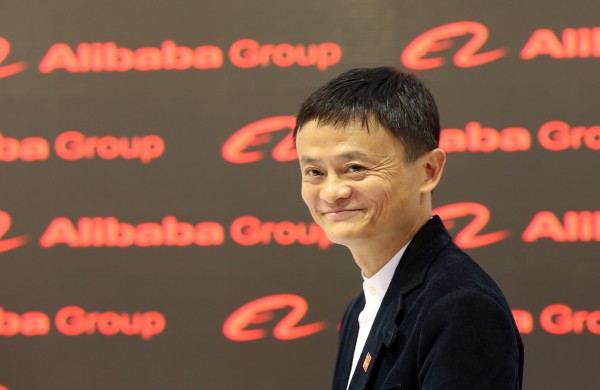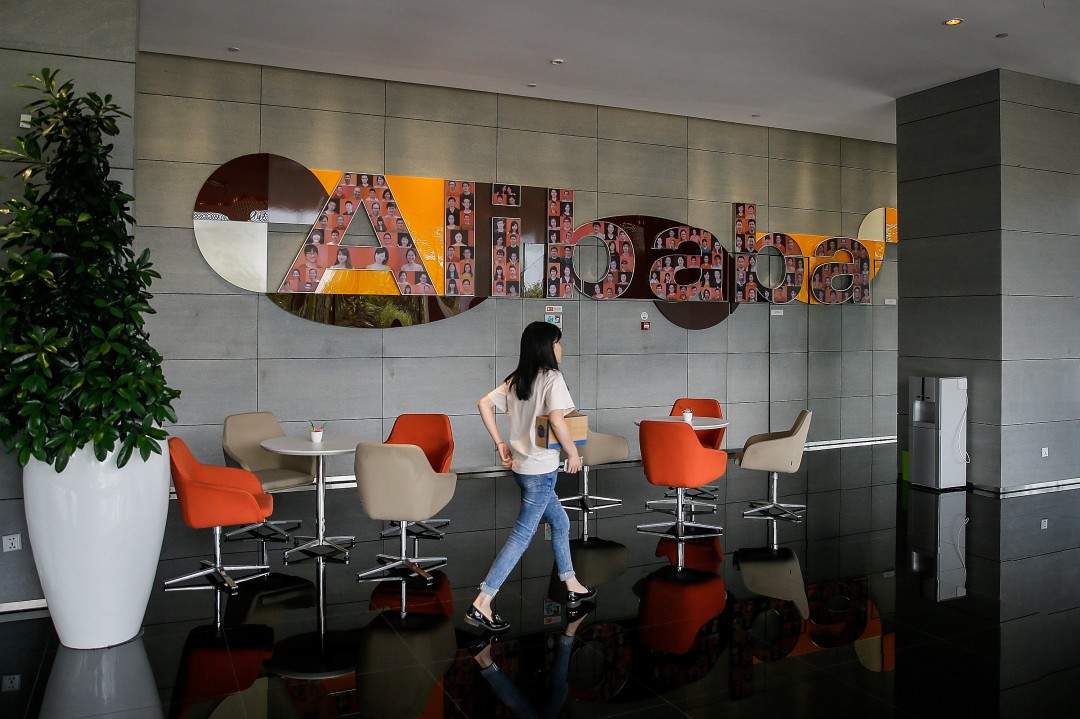The ticket kiosks at Shanghai’s frenetic subway station have a mind of their own.
Recommended for You
Walk up to one and state your destination, and it’ll automatically recommend a route before issuing a ticket. It’ll even check your identification (a necessary step in China) by looking at your face. In the interest of reducing the rush-hour stampede, the system is set up to let you find information and buy tickets without pushing a button or talking to a person.
More impressive still, all this happens successfully in the middle of a crowded, noisy station. Each kiosk has to figure out who is speaking to it; zero in on that person’s voice within the crowd; transcribe the incoming speech; parse its meaning; and compare the person’s face against a massive database of photos—all within a few seconds.
To do it, the kiosks use several cutting-edge machine-learning algorithms. The really interesting thing, though, isn’t the algorithms themselves. It’s where they live. All that image processing and speech recognition is served up on demand by a cloud computing system owned by one of China’s most successful companies, the e-commerce giant Alibaba.
Alibaba is already using AI and machine learning to optimize its supply chain, personalize recommendations, and build products like Tmall Genie, a home device similar to the Amazon Echo. China’s two other tech supergiants, Tencent and Baidu, are likewise pouring money into AI research. The government plans to build an AI industry worth around $150 billion by 2030 and has called on the country’s researchers to dominate the field by then (see “China’s AI awakening”).
But Alibaba’s ambition is to be the leader in providing cloud-based AI. Like cloud storage (think Dropbox) or cloud computing (Amazon Web Services), cloud AI will make powerful resources cheaply and readily available to anyone with a computer and an internet connection, enabling new kinds of businesses to grow.
The real race in AI between China and the US, then, will be one between the two countries’ big cloud companies, which will vie to be the provider of choice for companies and cities that want to make use of AI. And if Alibaba is anything to go by, China’s tech giants are ready to compete with Google, Amazon, IBM, and Microsoft to serve up AI on tap. Which company dominates this industry will have a huge say in how AI evolves and how it is used.
Think bigger
Jack Ma created Alibaba Online, a simple e-commerce marketplace, in 1999, in his apartment in Hangzhou, on China’s east coast. Today the company’s headquarters, which I visited in January, consists of several large buildings housing tens of thousands of workers; the front entrance is guarded by a gigantic version of the company’s cartoonish orange mascot.
Alibaba’s core business remains selling goods and providing a platform for business-to-business trade. But this has spawned other lucrative operations, including a platform for logistics and shipments, an advertising network, and cloud computing and financial services. The company’s ubiquitous mobile payments app, Alipay, is run by a sister company, Ant Financial, which also offers loans, insurance, and investing via smartphone.

Jack Ma
Last year on “Singles Day,” a shopping event on November 11 that Alibaba invented, the company sold more than $25 billion worth of merchandise. By contrast, on last year’s Cyber Monday (November 27), the biggest online shopping day in the US, all retailers combined brought in $6.59 billion.
The company’s success has also helped shape Hangzhou’s vibrant tech scene. The city is home to dozens of incubators, funded in part by government subsidies, that are filled with entrepreneurs who previously worked at Alibaba.
Alibaba’s colorful founder apparently doesn’t take any of this for granted. “Jack Ma believes we have been successful because of our business model, a hard-working team plus the operation,” says Xiangwen Liu, the company’s director of technology development. “In the next era of company competition, Jack’s belief is the business model cannot give success for a giant like Alibaba. His belief is in technology.”
Last October Ma announced that his company would spend $15 billion over the next three years on a research institute called the DAMO Academy (“discovery, adventure, momentum, and outlook”), dedicated to fundamental technologies. The Chinese name for the institute, 达摩, references Dharma, a legendary Indian monk said to have brought Buddhism to China in the fifth century.
China has long since shaken off its reputation for simply copying Western innovations. According to the Organization for Economic Cooperation and Development (OECD), R&D spending in China grew tenfold between 2000 and 2016, rising from $40.8 billion to $412 billion in today’s dollars. The US still spends more—$464 billion in 2016—but its total has increased by only one-third since 2000.
Alibaba is already China’s biggest R&D spender, forking out $2.6 billion in 2017. DAMO will effectively triple its research budget, to more than $7 billion. That most likely means Alibaba will overtake IBM, Facebook, and Ford and will narrow the gap with the world’s leaders, Amazon and Alphabet, which spent $16.1 billion and $13.9 billion respectively on R&D in 2017.
DAMO will include a portfolio of research groups working on fundamental and emerging technologies including blockchain, computer security, fintech, and quantum computing. But AI is the biggest focus, and it seems like the one with the greatest potential.
DAMO clearly takes inspiration from the great commercial research labs of the 20th century. Liu mentions, for instance, AT&T’s Bell Labs, which conducted fundamental research on materials, electronics, and software, producing breakthroughs including the transistor, the laser, and the charge-coupled device for digital imaging, as well as the UNIX operating system and the programming languages C and C++. Liu says Alibaba is also inspired by the way the US’s Defense Advanced Research Projects Agency (DARPA) funds different teams competing on the same project.
By signing up you agree to receive email newsletters and notifications from MIT Technology Review. You can change your preferences at any time. View our Privacy Policy for more detail.
Alibaba is clearly learning from the likes of Alphabet and Amazon, too. Like them, it has released a cloud machine-learning platform. The first from a Chinese company, it was launched in 2015 and upgraded significantly last year. The tools it offers are similar to those on Google Cloud and Amazon Web Services, including off-the-shelf solutions for things like voice recognition and image classification.
Developing these tools was a major technical undertaking for Alibaba. It signals both how ambitious the company is to shape the future of AI and how big a role cloud computing will play.
Another such signal is that Alibaba’s cloud supports several other companies’ deep-learning frameworks, including Google’s TensorFlow and Amazon’s MXNet. Deep learning—a technique for training machines to recognize things by feeding lots of data into a many-layered neural network—is the most important approach in AI right now, used for everything from controlling autonomous vehicles to transcribing speech. Tech companies build their own deep-learning frameworks in part to get users onto their cloud platforms, because those frameworks typically run best on their infrastructure. By supporting its competitors’ frameworks, Alibaba gives developers a reason to use its platform instead.
And that’s not all: Liu hints that Alibaba may be working on its own deep-learning framework, something that could help it get even more engineers hooked on its cloud. When asked if Alibaba might release some of the code it has developed, she answers: “When it’s mature.”
Smart answers
There have been other glimpses of Alibaba’s progress in AI lately. Last month a research team at the company released an AI program capable of reading a piece of text, and answering simple questions about that text, more accurately than anything ever built before.
The text was in English, not Chinese, because the program was trained on the Stanford Question Answering Dataset (SQuAD), a benchmark used to test computerized question-and-answer systems. Alibaba’s program uses several novel machine-learning techniques, and it notched a higher score than entries from Microsoft, Samsung, and others. Remarkably, it scored better than the average human being (although this is a bit deceptive; it doesn’t mean the program actually understands what it is reading).
More remarkable, though, is how fast Alibaba rose up the leaderboard. The company only submitted its first entry to SQuAD in September 2017. “Quite a few of the top 10 teams represent top Chinese institutions, reflecting the ongoing democratization of AI,” says Pranav Samir Rajpurkar, a PhD student at Stanford who runs the SQuAD contest.
Alibaba has already used the program to improve the automated customer support on its online marketplace, says Si Luo, a member of the team. And it hopes to deploy language understanding across its platforms and technologies.
Alibaba’s AI researchers are working on other cutting-edge projects, such as generative adversarial networks, or GANs. In this exciting new machine-learning approach, developed by a Google researcher, two neural networks are pitted against one another; one tries to generate data that seems as if it comes from a real data set, and the other tries to distinguish real examples from fake ones. The technique lets computers learn more efficiently from unlabeled data, and it can be used to create realistic-looking synthetic images and video (see “The GANfather: The man who’s given machines the gift of imagination”).

Gathering clouds
One advantage China’s tech companies have over their Western counterparts is the government’s commitment to AI. Smart cities that use the kind of technology found in Shanghai’s metro kiosks are likely to be in the country’s future. One of Alibaba’s cloud AI tools is a suite called City Brain, designed for tasks like managing traffic data and analyzing footage from city video cameras.
There are such experiments in the West too, such as Alphabet’s Sidewalk project, which plans to transform a suburb of Toronto with autonomous vehicles, delivery robots, and AI-based management systems. But China will most likely want to do things on a larger scale, which will give its companies an edge in the global marketplace for AI.
The Chinese authorities’ interest in using technology for social control also helps. There are plans for a “social credit system” that would track and score citizens’ everyday behavior with a view to perks or punishment. Face recognition software from Chinese companies like SenseTime is being used to find criminals in surveillance footage, and to track suspected dissidents.
Another advantage Chinese firms enjoy is access to vast amounts of data—because of China’s huge population— with relatively few restraints on how it can be used. Ant Financial’s Alipay, for instance, has more than 520 million users, and the company determines a person’s creditworthiness, in part, by examining his or her daily financial transactions and social connections. This wouldn’t fly in Europe or the US, where strict rules dictate what kinds of data can go into a credit score. But in regions like Africa, where China has a strong economic foothold, such technologies could become the norm.
Alibaba is already exporting AI technology. It is the world’s fifth-largest cloud-computing provider, behind Amazon, Google, Microsoft, and IBM, and its cloud machine-learning platform is available in several languages, including English. This week, Alibaba launched a version aimed at developers and companies in Europe; it also announced a new AI lab in collaboration with Singapore’s Nanyang Technological University.
In some places, Alibaba is arguably ahead of the competition. Last December, it announced a collaboration with the Malaysian government to provide smart city services, including a video platform that can automatically detect accidents and help optimize traffic flow.
AI with Chinese characteristics
So if the world’s AI is supplied by China, what sorts of values will it come with? In the West there is growing concern about issues such as biased algorithms and job losses to automation. That kind of debate is less often heard in China. Speaking at the World Economic Forum in Davos, Switzerland, recently, Jack Ma, Alibaba’s boss, acknowledged the risks that come with AI; but unlike its US counterparts, Alibaba isn’t involved with ethics groups like the Partnership on AI. And unlike, say, DeepMind, the AI-focused subsidiary of Alphabet, it doesn’t have an internal ethics division.
As China becomes more proficient in AI, it will help determine how the technology reshapes the world. And Alibaba will undoubtedly be an important part of this picture.
“Well before anybody used the term artificial intelligence in a business context, Alibaba was a major innovator,” says William Kirby, a China expert at Harvard Business School. “In my view, the company has done more to change the way business is done in China than anyone; they are ambitious on every front.”
Keep up with the latest in AI at EmTech MIT.
Discover where tech, business, and culture converge.
September 11-14, 2018
MIT Media Lab





